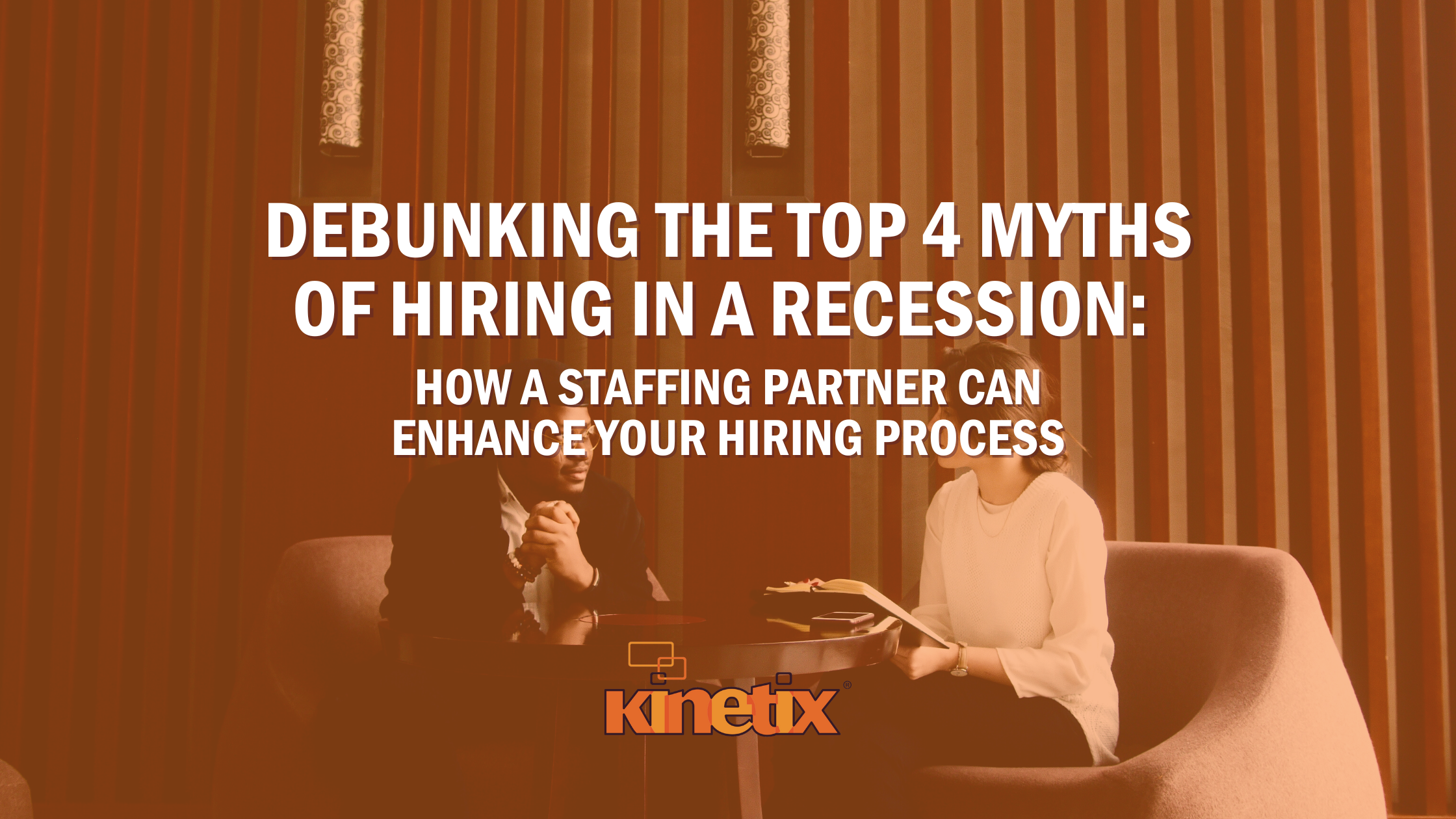
In the wake of the labor crisis caused by the pandemic in 2020, many employers turned to staffing partners to fulfill their hiring goals. Fast forward three years and organizations continue to rely on recruiting partners. But is this truly the optimal approach? Let's examine some common misconceptions and explain why partnering with staffing agencies can be beneficial.
Myth 1:
One myth suggests that having multiple staffing partners is the best approach in a hiring crunch and that numerous partners can boost your organization's marketability and results. However, this can actually be detrimental. By having a unified relationship with a single recruiting partner, you are likelier to have clear brand messaging, better results, greater accountability, and a deeper relationship with that recruiting partner.
Myth 2:
Another myth suggests that while some areas may have experienced a slight easing in hiring, it's premature to assume that hiring challenges have vanished for good. The April unemployment rate was only 3.4%, just one percentage point lower than in March. More candidates don't automatically translate into a flood of qualified employees.
This holds particularly true for specialized roles, where skills gaps persist and even widen in industries like healthcare and accounting. Overcoming this challenge requires a different approach. Instead of relying solely on current skills, consider hiring based on potential and fit. Many employers have already abandoned the requirement for a college degree, focusing instead on specific job-related skills. It's about finding the right fit.
As Simon Sinek famously said, "You don't hire for skills; you hire for attitude. You can always teach skills." Another way to uncover additional candidates is by reevaluating job descriptions and making small compromises. Requiring a college degree may not be essential for many professions, yet it remains an arbitrary barrier for some employers. Casting a wide recruiting net beyond the traditional channels can also identify untapped talent pools, such as veterans, women, and retirees returning to the workforce, who often possess valuable skills and knowledge.
If you struggle to find qualified candidates for specialized roles, seeking help from a specialized recruiting partner with established talent pools and industry knowledge can expedite your hiring process. These agencies focus on specific talent, relieving stress from your HR team and hiring managers.
Remember, it's about acquiring new talent and retaining existing employees. Turnover and replacing valuable employees incur significant costs, making retention crucial. Collaborating with experts who can review pay competitiveness and stay updated with research and trends, like Kinetix, can help you engage and retain top performers.
Myth 3:
Now, let's dispel another myth: the belief that retention isn't a concern in 2023 due to a down market. However, the reality is different. Despite economic uncertainties, employees have voluntarily left their jobs, resulting in what some call "The Great Resignation" or "The Great Reshuffle." These employees often seek better pay and flexibility and swiftly find new opportunities. Ignoring the possibility of employees quitting in a downturn could harm your talent strategy. A recent job seeker survey revealed that 56% of individuals plan to seek new employment within the next year.
Employers should emphasize the employee experience and strive to engage and retain their workforce. Providing stimulating work is one way to satisfy employees. If your company has exciting projects or cutting-edge technology, showcase them. Many individuals prioritize engaging and challenging tasks, especially Gen Z and Millennials.
Flexibility is also vital. People value flexible schedules and options for remote or hybrid work if feasible. The pandemic underscored the importance of work-life balance, prompting employers to revisit policies and incorporate flexible work arrangements.
In a rapidly evolving world, career growth opportunities play a crucial role. Upskilling or reskilling current employees has proven to increase retention rates. Programs that offer assessments, career pathing, and training for in-demand jobs keep employees engaged and motivated.
An employer's value proposition is another key factor. Clearly communicating what sets your company apart as an employer of choice helps attract and retain top talent.
Myth 4:
Finally, let's address the myth that having an onsite recruiting partner fails to deliver enough benefits to justify the cost. This misconception can be dispelled swiftly. Onsite management can actually reduce overall workforce costs. An effective onsite program enables better understanding and optimization of your workforce. It encompasses talent sourcing and assessment, streamlined onboarding and training, integrated support for hiring managers to track performance, and opportunities for upskilling employees.
Summary:
To summarize, relying on a staffing partner is the best approach. By partnering up with a staffing agency, you can better refine and expand your strategy, prioritize potential and culture fit, explore untapped talent pools, engage specialized talent, and focus on employee retention. And remember, onsite management brings numerous benefits to your organization.
Want to learn more about how Kinetix can kick your 2023 recruitment efforts into high gear? Contact us today!

